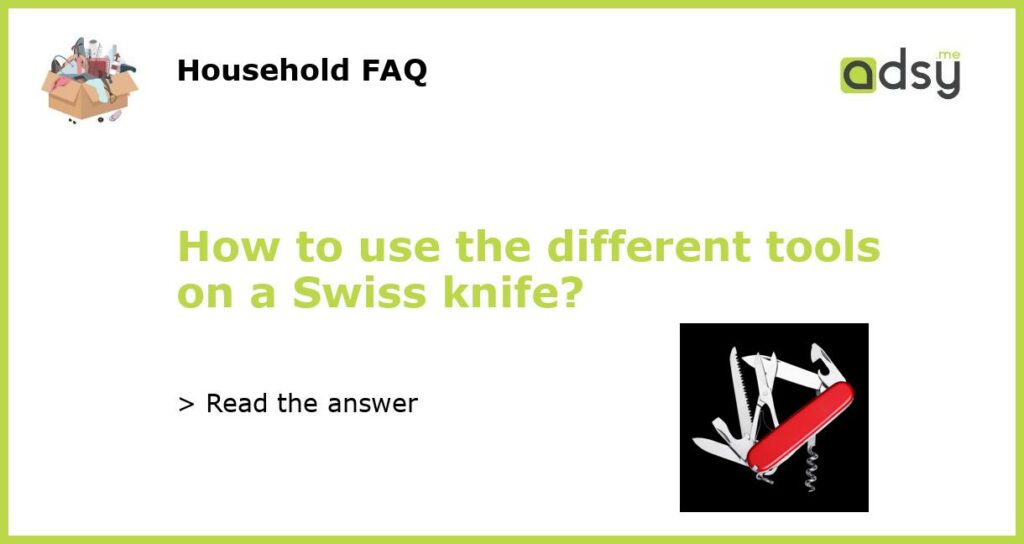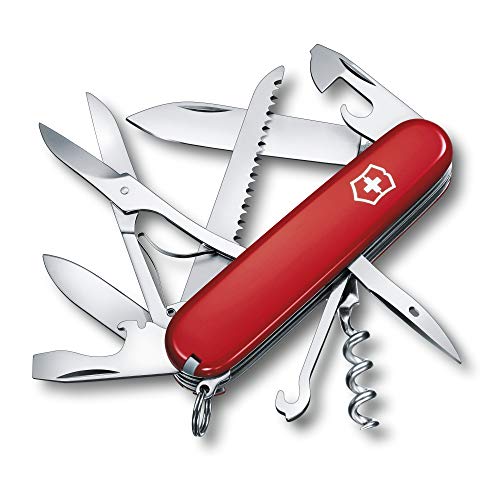The Swiss Knife: A Versatile Tool
The Swiss knife, also known as a pocket knife, is a popular tool known for its versatility. It is widely used by outdoor enthusiasts, campers, hikers, and even professionals. One of the standout features of a Swiss knife is its multiple tools, all incorporated within a compact design. From opening cans to cutting ropes, the Swiss knife has a tool for every situation. In this article, we will delve into the different tools found on a Swiss knife and discuss how to use them.
The Main Tools and Their Functions
A standard Swiss knife usually includes a blade, scissors, a can opener, a bottle opener, a screwdriver, a corkscrew, and a saw among other tools. Each of these tools serves a specific purpose and can be extremely useful in various scenarios.
The blade is one of the most commonly used tools on a Swiss knife. It can be used for cutting, slicing, and even carving. When using the blade, make sure to exercise caution and keep your fingers away from the blade’s edge to avoid any accidents.
The scissors on a Swiss knife are perfect for cutting various materials, such as paper, fabric, or even fishing line. They provide a precise and controlled cutting experience. To use the scissors, simply unfold them and grip the handles, just like you would with a regular pair of scissors.
The can opener and bottle opener are handy tools for opening cans and bottles. To use the can opener, place the tip of the opener under the lid of the can and apply pressure while moving the opener around the lid. The bottle opener can be used by placing the hook under the bottle cap and leveraging it to pry the cap off.
Another useful tool on a Swiss knife is the screwdriver. It typically comes in two sizes: one for small screws and another for larger ones. To use the screwdriver, unfold it and insert it into the screw head. Apply pressure and turn in a clockwise direction to loosen or tighten the screw.
The Lesser-Known Tools and Their Applications
In addition to the main tools, Swiss knives often feature lesser-known tools that can be equally useful in certain situations. These tools include a corkscrew, a saw, tweezers, a toothpick, a file, and a reamer.
The corkscrew is ideal for opening bottles of wine or other corked beverages. To use it, unfold the corkscrew and position the screw at the center of the cork. Slowly rotate the corkscrew downward until the cork comes out of the bottle.
The saw found on a Swiss knife can be used to cut small branches or to create notches in wood. It’s important to be careful and ensure proper grip to avoid accidents while using the saw. Use steady strokes in a forward and backward motion to cut the desired material.
Tweezers and a toothpick are small tools that can come in handy in various situations. The tweezers can be used for removing splinters or picking up small objects. The toothpick is useful for cleaning hard-to-reach spots or for other hygienic purposes. Simply unfold the tool and use it accordingly.
A Swiss knife may also include a file, which can be used to smooth rough edges or to sharpen small objects. The file typically has different levels of coarseness, allowing for different levels of sanding and filing. The reamer is a tool resembling a small awl and can be used for making holes or enlarging existing ones. For example, it can be used for drilling holes in leather, wood, or other soft materials.
Tips for Safe and Effective Use
When using a Swiss knife or any tool, safety should always be a priority. Here are some tips to ensure safe and effective use of the different tools on a Swiss knife:
1. Always exercise caution when handling the knife, especially when using the blade or other sharp tools. Keep your fingers away from the blade’s edge at all times.
2. Make sure to unfold each tool properly and lock it in place before using it. This ensures stability and reduces the risk of accidents caused by the tool collapsing.
3. Use the appropriate tool for the task at hand. Using the wrong tool can lead to inefficiency, damage to the tool, or potential accidents.
4. Keep the tools clean and well-maintained. After using the Swiss knife, wash it with soap and water, dry it thoroughly, and apply a small amount of lubricant to prevent rusting and ensure smooth operation.
Conclusion
The Swiss knife is a versatile and practical tool that can be used for a wide range of tasks. Whether you’re camping in the wilderness or simply need a compact tool for everyday use, the Swiss knife has you covered. By understanding how to use the different tools on a Swiss knife and following safe practices, you can unleash the full potential of this handy tool.






